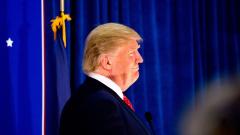Today, Stanley Fischer submitted his letter of resignation from the Federal Reserve’s Board of Governors, effective next month, the second such resignation of Donald Trump’s presidency. While Fischer’s term as Vice Chairman of the Fed was set to end next year, he had the ability to serve as a governor through 2020. Along with Trump’s decision next year on whether to replace Janet Yellen as the Fed’s chair, this means Trumps will have the opportunity to appoint five of seven governors to America’s central bank.

Given that the position holds a 14-year term, it is unusual for a president to have the opportunity to make so many appointments. As Diane Swonk of DS Economics noted, “It’s the largest potential regime change in the leadership of the Fed since 1936.”
Of course the question is now whether a change in personnel will lead to a change in policy.
Trump has already taken steps to fill one of the vacancies, nominating Randal Quarles earlier this year. Quarles, a former Bush-era Treasury official turned investment banker, will be taking the specific role of Fed vice chair of supervision. As a vocal critic of Dodd-Frank, and the Volker Rule in particular, Quarles may help relieve some of the regulatory burden on financial institutions, but his views on monetary policy are less clear. He has also voiced his support for rules-based monetary policy, though he has distanced himself to the specific proposal of the “Taylor Rule.” Given the growing consensus building for NGDP-targeting, and Republicans in Congress advocating for rules-based Fed reform, Quarles could become a supporter from within the central bank. All in all though, Quarles is seen by many observes as a bland Fed-appointment.
More concerning are the views of Marvin Goodfriend, who has been reported to be a front runner for one of the Fed vacancies. An economics professor at Carnegie Mellon University and former director of research at the Richmond Fed, Goodfriend has a traditional central banker background and the dangers that comes with it. In 2016, Goodfriend made an impassioned plea for the Fed to consider negative-interest rates:









Leave A Comment